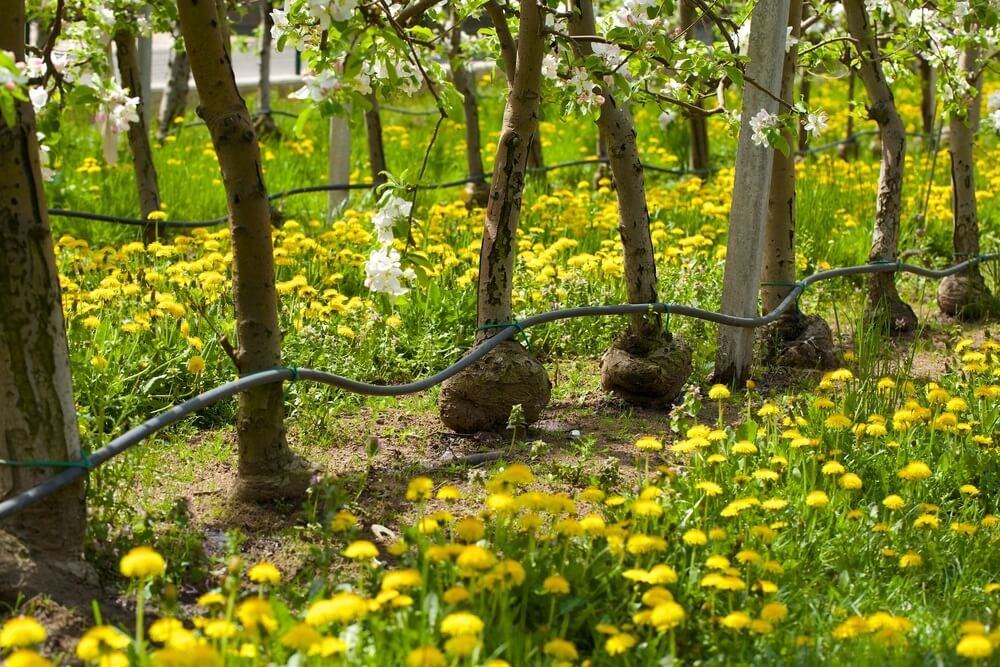Drip irrigation is the most efficient and most economic watering options, allowing you to ensure proper watering and save money on your utility bills. Drip systems use far less water than conventional methods and a drip irrigation system will pay for itself many times over, and improve hydration for your plants.
Drip Irrigation System Essentials
Drip irrigation systems for home gardens are very flexible, and can be customised for any location. You can even convert old sprinklers to drip systems, quite easily.
The critical considerations for drip irrigation systems include:
- Drip irrigation systems run off a mains supply like a garden tap, through a valve system. Some systems use automatic timers, flow meters, and other useful features which improve watering efficiency.
- Water source locations are extremely important in drip system layouts. You may need to manage competing demands for water, using tap and hose fittings, depending on the location of your water source. You can also use Colorbond rainwater heads or aluminium water heads or rainwater systems as water sources, a simple solution for just about any garden.
- Some drip irrigation systems are basically modified hoses, not “systems”, but are appropriate for particular locations.
- Vegetable garden drip irrigation systems tend to be heavy duty, bigger systems with more water capacity, due to the much higher demand for water from food vegetables.
- It’s advisable to check your drip system regularly, to ensure it’s always working properly. Outdoor systems may be disrupted by pets, weather, or falling materials from trees.
- Replace any leaking or kinked elbow joints or lengths of hose ASAP, because they can waste a lot of water and starve plants of their water.
Drip System Layout
When planning your drip system it’s important to be mindful of your current and future needs. If you plan to expand your garden bed or rearrange elements in your backyard, design your system with these changes in mind.
The basic garden bed layout is simple and common sense based. All you need to do is ensure that the drip system delivers water evenly to the garden bed. Some gardeners simply loop their drip systems around garden beds, which will also work well.
Practical Tips for Installing a Drip System
For best practice installation, particularly in urban gardens, make sure to always secure your drip system. This is especially important if you’re watering vertical gardens or high-traffic areas where people or pets may bump into your system.
You can use outdoor brackets to secure your drip system or simply secure it to your garden beds. For vertical wall gardens or multiple hanging plants around the home, you can run your drip system over the hanging plants and wall planter beds by securing them to the wall or a strong roof like corrugated roofing.
An independent “hose” type drip system can be very useful if you have widely separated areas of garden for watering. You can set up these hoses quite easily wherever required, and not have to use long lengths of connected drip hose. Again, you’re advised to secure the hose to prevent damage or obstruction to the water flow.
If you’re looking for more DIY tips for your drip irrigation system or another project in the Brisbane area, talk to our specialists at Queensland Sheet Metal. We are your premium supplier for sheet metal, rainwater systems, and a range of other materials.


